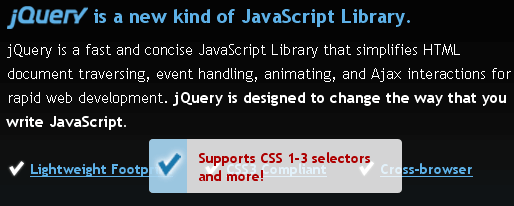CSS content-visibility
The CSS language is full of small gaps which are frustrating to navigate. Between CSS properties to hide a container and its contents, there is still room for improvement. visibility: hidden keeps height and width integrity while display: none on a container hides everything. You can use .container > * to hide all contents of a container, but what if there was a better way?
There is a better way to hide the contents of an element while respecting the container's border and dimensions. That better way is using the content-visibility property:
.my-container.contents-loading {
content-visibility: hidden;
}
A demo of such functionality:
See the Pen
Untitled by David Walsh (@darkwing)
on CodePen.
Avoiding a .container > * selector by using content-visibility: hidden is so much nicer from a maintenance perspective!
![39 Shirts – Leaving Mozilla]()
In 2001 I had just graduated from a small town high school and headed off to a small town college. I found myself in the quaint computer lab where the substandard computers featured two browsers: Internet Explorer and Mozilla. It was this lab where I fell...
![How I Stopped WordPress Comment Spam]()
I love almost every part of being a tech blogger: learning, preaching, bantering, researching. The one part about blogging that I absolutely loathe: dealing with SPAM comments. For the past two years, my blog has registered 8,000+ SPAM comments per day. PER DAY. Bloating my database...
![iPad Detection Using JavaScript or PHP]()
The hottest device out there right now seems to be the iPad. iPad this, iPad that, iPod your mom. I'm underwhelmed with the device but that doesn't mean I shouldn't try to account for such devices on the websites I create. In Apple's...
![Duplicate the jQuery Homepage Tooltips]()
The jQuery homepage has a pretty suave tooltip-like effect as seen below:
The amount of jQuery required to duplicate this effect is next to nothing; in fact, there's more CSS than there is jQuery code! Let's explore how we can duplicate jQuery's tooltip effect.
The HTML
The overall...





I’ve found that it can cause accessibility issues and false problems in Lighthouse reports. But that’s
content-visibility: auto.For example, I have large white text on a black background in a footer, but I think Chrome doesn’t properly test/paint it/something because it says all text has insufficient contrast ratio (it has a ratio of like 12). Screen readers also seem to be problematic, though I can’t say exactly what’s going on there.